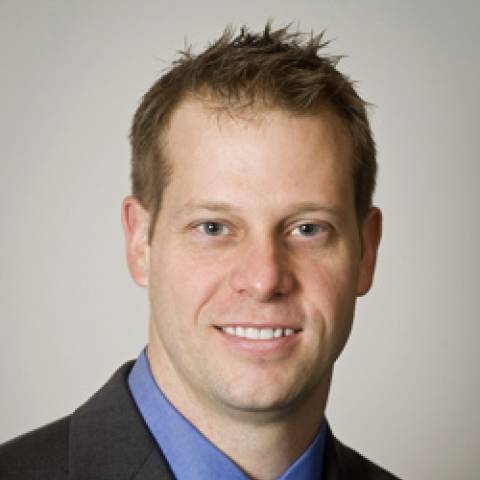Article
Ultrasonic propulsion device clears chronic residual stone fragments
Author(s):
A novel, handheld ultrasonic propulsion device effectively facilitated the clearance of chronic residual stone fragments, according to a case study from an ongoing randomized controlled trial shared during the 2021 AUA Annual Meeting.1
Mathew Sorensen, MD

“All stones surgeries may leave residual fragments. These fragments are at risk of developing future stone events, emergency department visits, and surgeries,” explained lead study investigator Mathew Sorensen, MD, an associate professor in the Department of Urology at the University of Washington.
“In particular, chronic fragments may be more difficult to clear. We know the majority of fragments after a stone procedure tend to clear early—those that are left may be trapped, and while they dwell within the kidney, are at risk to grow and get bigger,” added Sorensen.
The overall goal of Sorenson et al’s ongoing trial is to validate a “handheld, ultrasound-based system in a single platform that we use on awake subjects to image and reposition stones and fragments to facilitate natural clearance of stones.”
The study is enrolling adult patients who have residual fragments that are visible on imaging following treatment for stones. The recruitment goal for the trial is 66 patients. Patients are not eligible to participate in the trial if their stones are not visible on ultrasound, they are on anticoagulants or blood thinners, and/or they have mobility issues (eg, an inability to lie on their back or roll side to side) that would prevent them from cooperating during the procedure.
For the trial, patients receive a screening ultrasound with the investigational study device and, if the investigators are able to see the fragments and the patient meets the other study criteria, the patient is randomized in a 1:1 ratio to the treatment or control arm. Patients in the control arm receive nothing beyond the screening ultrasound. In the treatment arm, the patient receives the procedure, in which investigators attempt to reposition the fragments with the device. The individuals in the control arm also get a series of pain assessments before and through the procedure, as well as weekly phone calls for 3 weeks to follow-up on the passage of fragments and/or any adverse events.
The study treatment of ultrasonic propulsion is delivered in a session that lasts a maximum of 10 minutes. According to Sorenson, the treatment uses low negative pressure with a peak of 2.4MPa, a short pulse duration of 25 msec, 20 Hz, and each push is a maximum of 3 seconds. He also noted that ultrasound provides real-time guidance on the movement of fragments. Investigators are allowed to repeat the propulsion every 4 or more weeks up to a maximum of 4 total sessions per side. “In practice, most patients are getting 1, maybe 2 sessions,” said Sorenson.
All patients enrolled in the trial receive follow-up imaging ≤90 days from randomization, which Sorenson said, “In practice, this is usually about 4 weeks after the randomization.” All patients also receive phone calls/chart review every 6 months for up to 5 years.
At the time of the AUA Meeting, 53 of the target 66 subjects had enrolled in the trial, 27 of whom received the treatment, and 26 of whom were randomized to the control arm.
Beyond summarizing the trial itself, Sorenson’s presentation at the AUA meeting focused on a recent subject from the trial who could help “inform the effect of this technology on chronic fragments.”
The following were the patient characteristics for the case study:
- Patient had a left shockwave lithotripsy on January 2, 2020, for left lower pole stone.
- Over following 17 months, patients had 7 imaging exams (all types) that imaged the kidneys—some for stones and some for other reasons.
- Patient denied passing any fragments other than brief period of time around the time of the shockwave procedure.
- Patient was randomized into the treatment arm of this trial on May 28, 2021.
Sorenson said that there was fragment movement “almost immediately,” occurring with the third individual 3-second pulse which he said was delivered at a “very low energy setting” of output level 2 of 5. Further, over half (52%; 41 of 79) of the pulses resulted in visible fragment movement on ultrasound, and the patient experienced no pain prior to, during, or following the procedure.
The procedure was successful, with the patient calling within 2 hours of session completion and reporting the passing of 9 fragments. Regarding safety, there were no adverse events or hematuria.
In his concluding remarks, Sorenson said, “We have an ongoing study to evaluate the benefit of clearance of residual fragments with an ultrasonic propulsion device. The device is noninvasive and used in awake subjects. This case demonstrates that even chronic fragments can be successfully cleared, sometimes within hours of the procedure, even if they have not previously cleared for months.”
Reference
1. Sorensen MD, Dai JC, Chen TT, et al. Randomized control trial of ultrasonic propulsion to facilitate clearance of chronic residual fragments. Presented during 2021 American Urological Association Annual Meeting. September 10-13, 2021. LBA01-06
Newsletter
Stay current with the latest urology news and practice-changing insights — sign up now for the essential updates every urologist needs.

















